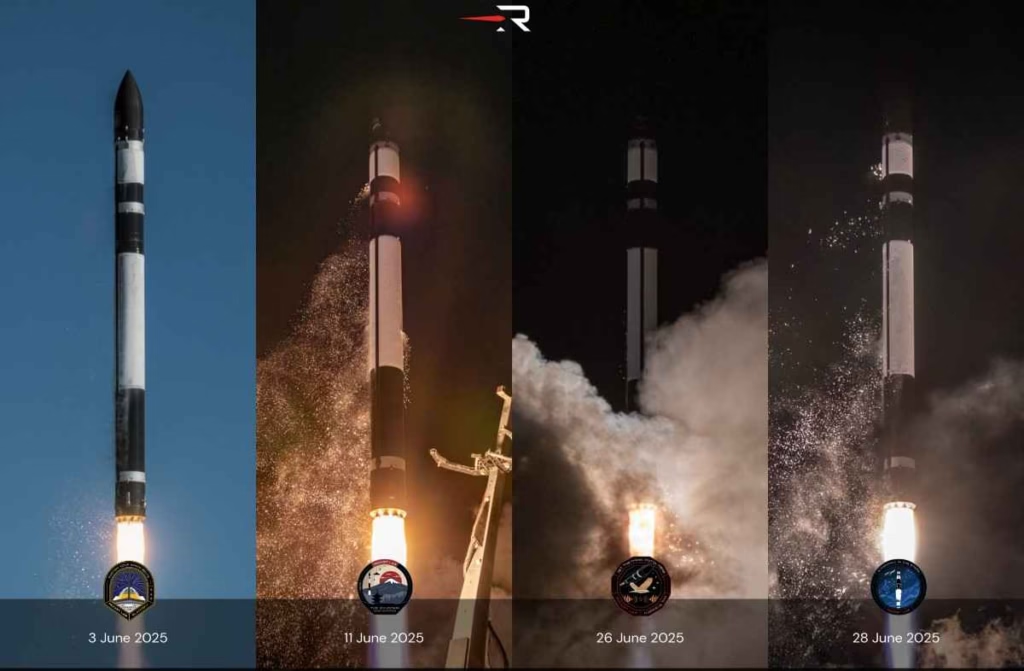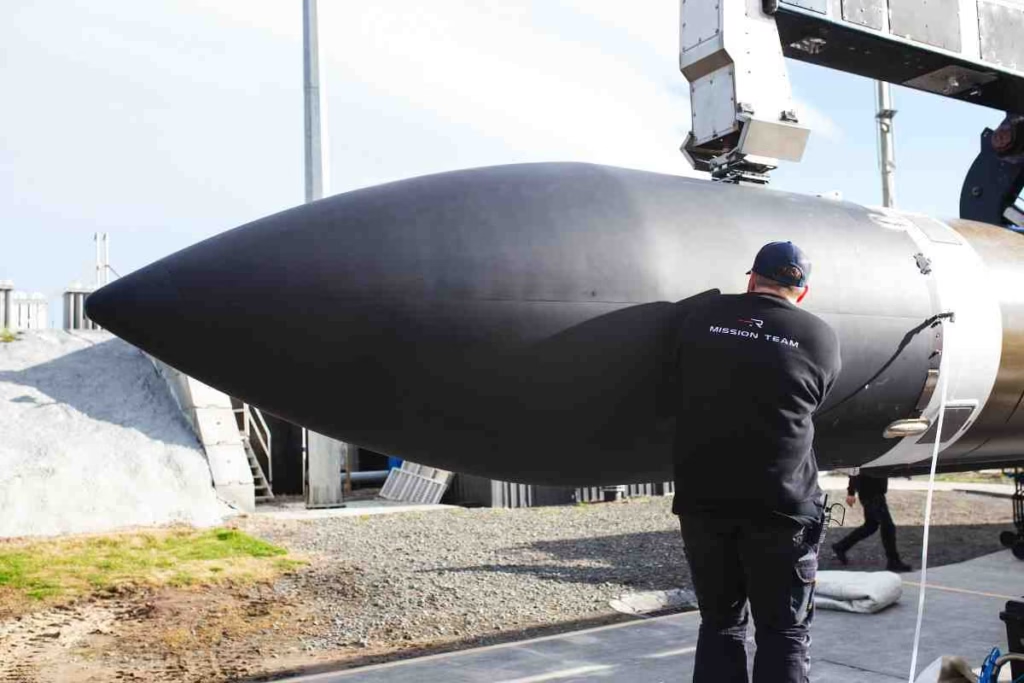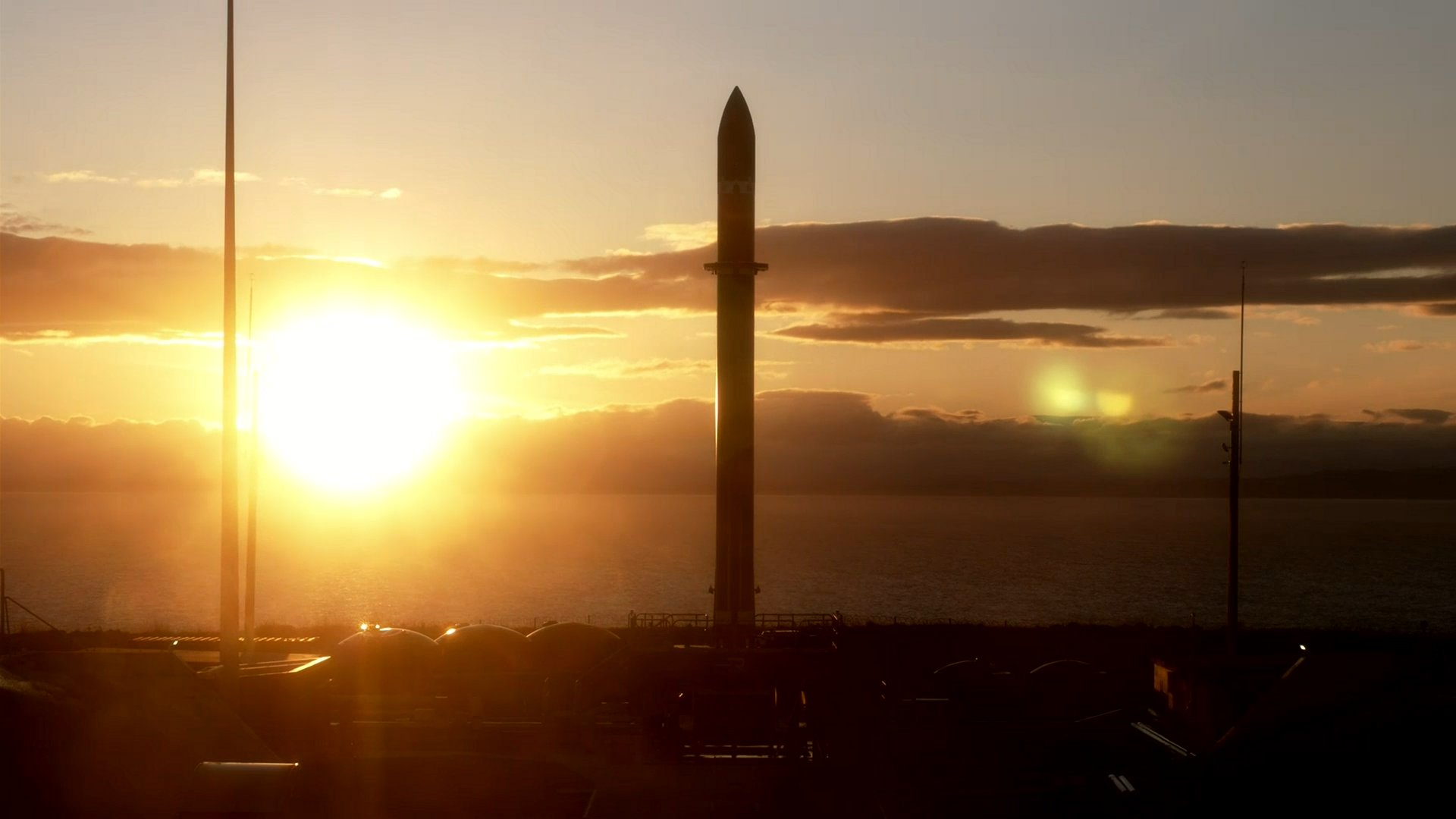Rocket Lab Build 400-Foot Landing Platform with Bollinger signed a new agreement to build a 400-foot sea-based landing platform in Louisiana for recovering the reusable Neutron rocket. Learn how this partnership supports Rocket Lab’s mission to advance launch reusability.

Introduction: Rocket Lab Build 400-Foot Landing Platform
Rocket Lab has Rocket Lab Build 400-Foot Landing Platform another major step toward making its upcoming Neutron launch vehicle a cornerstone of the reusable rocket market. On July 10, the company announced that it had signed an agreement with Bollinger Shipyards, a shipbuilding leader based in the United States, to complete the construction of a 400-foot ocean landing platform. The barge will support at-sea recoveries of Rocket Lab’s medium-lift Neutron rocket and marks a significant expansion of Rocket Lab’s infrastructure in Louisiana.
This move highlights Rocket Lab’s growing ambitions to compete with other launch providers by enabling reusable missions and providing rapid, cost-effective access to space for commercial and government customers.
Rocket Lab’s Vision for Neutron: Rocket Lab Build 400-Foot Landing Platform
Rocket Lab, a company that began as a small launch provider focused on lightweight satellites, has quickly evolved into a major space industry player. After the success of its Electron rocket, Rocket Lab shifted focus to a larger vehicle called Neutron, which is designed to be reusable, human-rated, and capable of launching payloads up to 15,000 kilograms to low Earth orbit.
With Neutron, Rocket Lab aims to meet the demands of satellite mega-constellations, national security space missions, and deep space exploration initiatives. But more importantly, Neutron’s design incorporates a fully reusable first stage that will return to Earth and land on an ocean platform—similar to what competitors like SpaceX have pioneered with the Falcon 9.
The partnership with Bollinger Shipyards now gives Rocket Lab the ability to complete, deploy, and operate that key piece of infrastructure—the landing barge—for future Neutron recoveries.
Bollinger Shipyards: An Industry Leader in Marine Infrastructure
Bollinger Shipyards, based in Louisiana, is a well-established American shipbuilder with decades of experience in constructing high-performance vessels for both the public and private sectors. The company has delivered more than 750 ships, including US Coast Guard cutters, offshore supply vessels, and various custom marine platforms.
By choosing Bollinger Shipyards, Rocket Lab gains access to a trusted industrial partner with:
- Deep experience in large-scale steel construction
- Shipyard facilities along the Gulf Coast
- Skilled labor force for rapid outfitting and deployment
- Strategic location near the Gulf of Mexico
These advantages are expected to streamline the process of converting the barge into a fully operational rocket landing platform, designed to safely receive and support the reusable stages of the Neutron rocket.
Inside the Landing Platform Project: Rocket Lab Build 400-Foot Landing Platform
The 400-foot-long landing platform will serve as the ocean-based recovery location for Neutron’s first stage booster after launch. The process is expected to follow a precise sequence:
- Launch from Wallops Island, Virginia – Rocket Lab’s Neutron rocket will lift off from its new launch complex under construction at NASA’s Wallops Flight Facility.
- Booster separation – After propelling the second stage toward orbit, the reusable first stage will detach and begin its controlled descent.
- Mid-air maneuvering – Using grid fins and throttle adjustments, the booster will steer itself toward the landing barge.
- Precision landing at sea – The booster will deploy landing legs and touch down vertically on the sea platform for recovery.
The barge will be outfitted with navigation and stabilization systems, a landing deck, power infrastructure, and telemetry equipment to track and support every phase of the landing. Once recovered, the booster can be transported back to land for refurbishment and reuse.
Why Louisiana? Rocket Lab Build 400-Foot Landing Platform
The decision to expand Neutron’s recovery infrastructure to Louisiana is strategic for multiple reasons:
- Industrial Expertise: Louisiana has a strong maritime and aerospace workforce.
- Shipbuilding Infrastructure: The Gulf Coast region, particularly around the Mississippi River Delta, hosts some of the most advanced shipyards in the U.S.
- Geographic Advantage: The proximity to both the Atlantic and Gulf of Mexico provides access for recovery missions launched from the East Coast.
- Economic Incentives: Louisiana offers attractive incentives for industrial development and has a history of supporting space-related programs.
By anchoring its barge development in Louisiana, Rocket Lab not only taps into local talent but also strengthens its national logistics chain as it scales up Neutron operations.
Supporting Reusability: The Future of Spaceflight
The development of a landing barge is more than just a logistical necessity; it represents a core part of Rocket Lab’s commitment to reusability. Neutron is designed with a carbon composite structure, a wide base for stability, and landing legs built into the rocket body. The company’s goal is to make Neutron a low-cost, high-cadence launch vehicle, capable of launching and landing with minimal refurbishment between missions.
This barge platform ensures that Rocket Lab has a controlled, predictable, and repeatable method of retrieving the rocket booster. Unlike ground landings, which require large clear zones and are limited by geography, sea-based recoveries provide greater flexibility and reduced operational risk.
Competitive Implications: Rocket Lab Build 400-Foot Landing Platform
Rocket Lab’s move to develop its own landing barge draws clear comparisons to SpaceX’s “Just Read the Instructions” and “Of Course I Still Love You” droneships, which have been used for dozens of successful Falcon 9 landings.
However, Rocket Lab is positioning Neutron as a mid-class alternative—filling the gap between small launchers like Electron and heavy lifters like Falcon Heavy or Starship. By building its own infrastructure from the ground up, Rocket Lab is:
- Reducing dependency on third-party providers
- Lowering launch and recovery costs over time
- Gaining operational control over every phase of the mission
- Increasing reliability and launch cadence
This strategic independence could give Rocket Lab a unique edge in winning contracts from customers who demand schedule assurance and cost-effectiveness, including defense and satellite internet providers.
Economic and Regional Benefits: Rocket Lab Build 400-Foot Landing Platform
Rocket Lab’s investment in Louisiana is expected to have positive economic ripple effects for the region. The collaboration with Bollinger Shipyards supports:
- Local job creation in construction, engineering, and logistics
- Supply chain growth through the procurement of components and services
- Workforce development by training a new generation of workers in aerospace-related maritime technology
- Industrial diversification by bringing spaceflight infrastructure to historically maritime regions
As the space economy continues to grow, coastal regions like Louisiana are likely to play a larger role in supporting launch and recovery operations across the U.S.
Timeline and Next Steps: Rocket Lab Build 400-Foot Landing Platform
The exact timeline for the platform’s completion has not been disclosed, but Rocket Lab has confirmed that the work is already underway. Construction will include:
- Structural reinforcement and steel fabrication
- Installation of support equipment and navigation systems
- Testing of stability and remote-control systems
- Integration with launch and recovery procedures
Once complete, the platform will undergo sea trials to validate its performance and readiness to support Neutron’s first recovery missions.
Rocket Lab plans to launch Neutron as early as 2025, and the barge will be a critical piece of that operational chain.
Leadership Commentary: Rocket Lab Build 400-Foot Landing Platform
Rocket Lab CEO Peter Beck has long advocated for building comprehensive, reusable systems to make space more accessible. In previous statements, Beck emphasized:
“Reusability is the key to unlocking true scalability in spaceflight. Neutron is our solution to meet the demand for rapid, reliable, and reusable launch. Building the right infrastructure—like this landing platform—is how we make that possible.”
Bollinger Shipyards’ leadership also echoed the significance of this partnership, stating their commitment to delivering a platform that meets the rigorous standards of the space industry.
Conclusion: Rocket Lab Build 400-Foot Landing Platform
The agreement between Rocket Lab and Bollinger Shipyards represents a major leap forward in Rocket Lab’s reusable launch vehicle strategy. With the development of a 400-foot ocean-based landing platform, the company is laying the foundation for safe, frequent, and cost-effective Neutron rocket recoveries.
Positioned in Louisiana, this platform brings economic benefits to the region while advancing Rocket Lab’s goal of providing full-service launch solutions—from liftoff to landing. As the company moves closer to the first Neutron launch, this infrastructure investment signals Rocket Lab’s intent to compete at the highest levels of commercial spaceflight.
ISRO Gujarat Space Facility: What Is India’s ₹10,000 Cr Project At Ahmedabad?
FAQs: Rocket Lab Build 400-Foot Landing Platform
Q1: What is Rocket Lab building in Louisiana?
A: Rocket Lab is working with Bollinger Shipyards to complete a 400-foot landing platform that will be used to recover its Neutron rocket boosters at sea.
Q2: Where will the Neutron rocket launch from?
A: Neutron will launch from Rocket Lab’s complex at NASA’s Wallops Flight Facility in Virginia.
Q3: Why is a sea landing platform necessary?
A: Sea platforms allow safe recovery of rocket boosters with fewer geographic limitations and enable rapid reuse.
Q4: Who is Bollinger Shipyards?
A: Bollinger Shipyards is a major U.S. shipbuilder based in Louisiana, known for building commercial and government vessels.
Q5: When will Neutron’s first flight take place?
A: The first Neutron launch is expected no earlier than 2025.
Q6: Will this project create jobs?
A: Yes, the construction and long-term operation of the landing platform are expected to create skilled jobs and support the local economy.
Q7: Is Neutron fully reusable?
A: The first stage of Neutron is designed to be fully reusable and will land on the ocean platform for refurbishment and reuse.
Q8: How does this compare to SpaceX?
A: Rocket Lab’s strategy is similar to SpaceX’s use of droneships but focused on medium-lift payloads with a different architecture and launch profile.
Q9: How big is the landing platform?
A: The platform is 400 feet long and will be equipped with systems to support precision landings and safe recovery.
Q10: Why was Louisiana chosen?
A: Louisiana offers experienced shipbuilding infrastructure, access to the Gulf, and an industrial base capable of supporting complex aerospace projects.
Honda Launches Reusable Rocket Prototype: Japanese Car Manufacture Company Enters Into Space Race?



